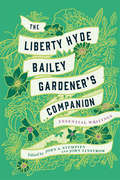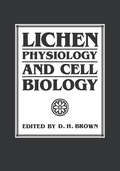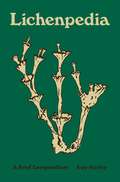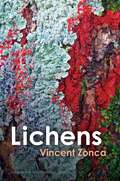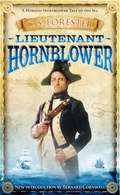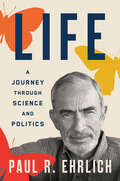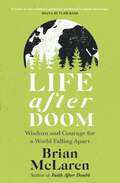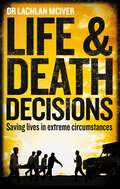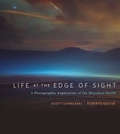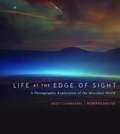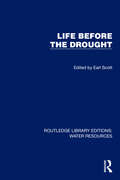- Table View
- List View
Liberation Ecologies: Environment, Development, Social Movements (PDF)
by Richard Peet Michael WattsAt the beginning of the twenty-first century, the environment and the future of development continue to be issues of crucial importance. Most explanations of environmental crisis emphasize the role of population growth, thus focusing their attention on the poor. By comparison, Peet and Watts' innovative book elaborates a political-economic explanation drawing from the most recent advances in social theory. This new edition has been extensively revised to reflect recent changes in debates over the real definitions of 'development' and 'environment', and contains nine completely new chapters.
Liberty and the Ecological Crisis: Freedom on a Finite Planet (Routledge Explorations in Environmental Studies)
by Katie Kish Christopher Orr Bruce JenningsThis book examines the concept of liberty in relation to civilization&’s ability to live within ecological limits. Freedom, in all its renditions – choice, thought, action – has become inextricably linked to our understanding of what it means to be modern citizens. And yet, it is our relatively unbounded freedom that has resulted in so much ecological devastation. Liberty has piggy-backed on transformations in human-nature relationships that characterize the Anthropocene: increasing extraction of resources, industrialization, technological development, ecological destruction, and mass production linked to global consumerism. This volume provides a deeply critical examination of the concept of liberty as it relates to environmental politics and ethics in the long view. Contributions explore this entanglement of freedom and the ecological crisis as well as investigate alternative modernities and more ecologically benign ways of living on Earth. The overarching framework for this collection is that liberty and agency need to be rethought before these strongly held ideals of our age are forced out. On a finite planet, our choices will become limited if we hope to survive the climatic transitions set in motion by uncontrolled consumption of resources and energy over the past one hundred and fifty years. This volume suggests concrete political and philosophical approaches and governance strategies for learning how to flourish in new ways within the ecological constraints of the planet. Mapping out new ways forward for long term ecological well-being, this book is essential reading for students and scholars of ecology, environmental ethics, politics and sociology and for the wider audience interested in the human-earth relationship and global sustainability.
Liberty and the Ecological Crisis: Freedom on a Finite Planet (Routledge Explorations in Environmental Studies #1)
by Christopher J. Orr Kaitlin Kish Bruce JenningsThis book examines the concept of liberty in relation to civilization&’s ability to live within ecological limits. Freedom, in all its renditions – choice, thought, action – has become inextricably linked to our understanding of what it means to be modern citizens. And yet, it is our relatively unbounded freedom that has resulted in so much ecological devastation. Liberty has piggy-backed on transformations in human-nature relationships that characterize the Anthropocene: increasing extraction of resources, industrialization, technological development, ecological destruction, and mass production linked to global consumerism. This volume provides a deeply critical examination of the concept of liberty as it relates to environmental politics and ethics in the long view. Contributions explore this entanglement of freedom and the ecological crisis as well as investigate alternative modernities and more ecologically benign ways of living on Earth. The overarching framework for this collection is that liberty and agency need to be rethought before these strongly held ideals of our age are forced out. On a finite planet, our choices will become limited if we hope to survive the climatic transitions set in motion by uncontrolled consumption of resources and energy over the past one hundred and fifty years. This volume suggests concrete political and philosophical approaches and governance strategies for learning how to flourish in new ways within the ecological constraints of the planet. Mapping out new ways forward for long term ecological well-being, this book is essential reading for students and scholars of ecology, environmental ethics, politics and sociology and for the wider audience interested in the human-earth relationship and global sustainability.
Liberty Hyde Bailey: Essential Agrarian and Environmental Writings
by Liberty Hyde Bailey"Nature-study not only educates, but it educates nature-ward; and nature is ever our companion, whether we will or no. Even though we are determined to shut ourselves in an office, nature sends her messengers. The light, the dark, the moon, the cloud, the rain, the wind, the falling leaf, the fly, the bouquet, the bird, the cockroach-they are all ours. If one is to be happy, he must be in sympathy with common things. He must live in harmony with his environment. One cannot be happy yonder nor tomorrow: he is happy here and now, or never. Our stock of knowledge of common things should be great. Few of us can travel. We must know the things at home."—from "The Meaning of the Nature-study Movement""To feel that one is a useful and cooperating part in nature is to give one kinship, and to open the mind to the great resources and the high enthusiasms. Here arise the fundamental common relations. Here arise also the great emotions and conceptions of sublimity and grandeur, of majesty and awe, the uplift of vast desires—when one contemplates the earth and the universe and desires to take them into the soul and to express oneself in their terms; and here also the responsible practices of life take root."—from The Holy EarthBefore Wendell Berry and Aldo Leopold, there was the horticulturalist and botanist Liberty Hyde Bailey (1858–1954). For Wendell Berry, Bailey was a revelation, a symbol of the nature-minded agrarianism Berry himself popularized. For Aldo Leopold, Bailey offered a model of the scholar-essayist-naturalist. In his revolutionary work of eco-theology, The Holy Earth, Bailey challenged the anthropomorphism—the people-centeredness—of a vulnerable world. A trained scientist writing in the lyrical tradition of Emerson, Burroughs, and Muir, Bailey offered the twentieth century its first exquisitely interdisciplinary biocentric worldview; this Michigan farmer's son defined the intellectual and spiritual foundations of what would become the environmental movement.For nearly a half century, Bailey dominated matters agricultural, environmental, and scientific in the United States. He worked both to improve the lives of rural folk and to preserve the land from which they earned their livelihood. Along the way, he popularized nature study in U.S. classrooms, lobbied successfully for women's rights on and off the farm, and bulwarked Teddy Roosevelt's pioneering conservationism.Here for the first time is an anthology of Bailey's most important writings suitable for the general and scholarly reader alike. Carefully selected and annotated by Zachary Michael Jack, this book offers a comprehensive introduction to Bailey's celebrated and revolutionary thinking on the urgent environmental, agrarian, educational, and ecospiritual dilemmas of his day and our own. Culled from ten of Bailey's most influential works, these lyrical selections highlight Bailey's contributions to the nature-study and the Country Life movements. Published on the one-hundredth anniversary of Bailey's groundbreaking report on behalf of the Country Life Commission, Liberty Hyde Bailey: Essential Agrarian and Environmental Writings will inspire a new generation of nature writers, environmentalists, and those who share with Bailey a profound understanding of the elegance and power of the natural world and humanity's place within it.
The Liberty Hyde Bailey Gardener's Companion: Essential Writings
by Liberty Hyde Bailey"Every family can have a garden." -Liberty Hyde BaileyFinally, the best and most accessible garden writings of perhaps the most influential literary gardener of the twentieth century have been brought together in one book. Philosopher, poet, naturist, educator, agrarian, scientist, and garden-lover par excellence Liberty Hyde Bailey built a reputation as the Father of Modern Horticulture and evangelist for what he called the "garden-sentiment"—the desire to raise plants from the good earth for the sheer joy of it and for the love of the plants themselves. Bailey's perennial call to all of us to get outside and get our hands dirty, old or young, green thumb or no, is just as fresh and stirring today as then.Full of timeless wit and grace, The Liberty Hyde Bailey Gardener's Companion collects essays and poems from Bailey's many books on gardening, as well as from newspapers and magazines from the era. Whether you've been gardening for decades or are searching for your first inspiration, Bailey's words will make an ideal companion on your journey.
Lichen Physiology and Cell Biology
by D. H. BrownIt is currently impossible to grow lichens under controlled conditions in the laboratory in sufficient quantity for physiological experiments. Lichen growth is slow and conditions which might accelerate the process tend to favour either the algal or fungal partner, resulting in the breakdown of balance symbiosis. Lichen physiologists are therefore forced to use field-grown material with all the problems associated with the unknown influences of unpredictable and unreproducible climatic conditions. Study of major biochemical topics, such as the nature of the carbohydrate and nitrogenous compounds passing between the symbionts, is less influenced by climatic conditions than the intrinsic nature of the symbionts and many advances have been made in these areas. Recently, the challenge of using field-grown plant material, the physiological status of which is intimately linked to environmental conditions, has proved to be a stimulus rather than a hindrance to a number of research groups. The occurrence of lichens in extreme habitats has prompted a number of field and laboratory studies with material from such diverse localities as the cold deserts of Antarctica and the temperate rain forests of the New Zealand bush. A comparative approach, using contrasted species or habitats from a particular geographical region has yielded much information and an appreciation of the variety of physiological adaptations which may exist. The close linkage between morphology and physiology is now being directly demonstrated, as is the relevance of ultrastructural information.
Lichenpedia: A Brief Compendium (Pedia Books #11)
by Kay HurleyAn illustrated mini-encyclopedia about the weird and wonderful world of lichensLichenpedia is a delightfully entertaining and beautifully illustrated A–Z treasury about the strange, obscure, and remarkable world of lichens, from their unique and essential roles in nature and the ways they are used in dyeing, brewing, and drug-making to how they have inspired writers and artists, from Henry David Thoreau to modern painters.In 100 brief entries written in a vivid, lively style, Kay Hurley introduces key aspects of lichen biology, environmental roles, emerging uses, scientific history, and myth. She describes the variety of forms that lichens take, from leafy to filamentous to things reminiscent of skin diseases, with imaginative names like witch&’s hair. She explains the surprising ways that birds and beasts—from reindeer and moose down to tiny tardigrades—use lichens, and how lichens survive in extreme environments, from deserts to Antarctica to outer space. Hurley also introduces some of the innovators who have advanced the knowledge of lichens, from the ancient Greek philosopher Theophrastus to today&’s professional lichenologists.With charming drawings by Susan Adele Edwards, Lichenpedia promises to put you in touch with the natural world in a new way by opening your eyes to these vital organisms, which are all around us, hidden in plain sight.Features a cloth cover with an elaborate foil-stamped design
Lichenpedia: A Brief Compendium (Pedia Books #11)
by Kay HurleyAn illustrated mini-encyclopedia about the weird and wonderful world of lichensLichenpedia is a delightfully entertaining and beautifully illustrated A–Z treasury about the strange, obscure, and remarkable world of lichens, from their unique and essential roles in nature and the ways they are used in dyeing, brewing, and drug-making to how they have inspired writers and artists, from Henry David Thoreau to modern painters.In 100 brief entries written in a vivid, lively style, Kay Hurley introduces key aspects of lichen biology, environmental roles, emerging uses, scientific history, and myth. She describes the variety of forms that lichens take, from leafy to filamentous to things reminiscent of skin diseases, with imaginative names like witch&’s hair. She explains the surprising ways that birds and beasts—from reindeer and moose down to tiny tardigrades—use lichens, and how lichens survive in extreme environments, from deserts to Antarctica to outer space. Hurley also introduces some of the innovators who have advanced the knowledge of lichens, from the ancient Greek philosopher Theophrastus to today&’s professional lichenologists.With charming drawings by Susan Adele Edwards, Lichenpedia promises to put you in touch with the natural world in a new way by opening your eyes to these vital organisms, which are all around us, hidden in plain sight.Features a cloth cover with an elaborate foil-stamped design
Lichens (Collins New Naturalist Library #86)
by Oliver GilbertLichens are fascinating and beautiful organisms able to colonise a vast range of habitats, including seemingly impossible places such as bare icy mountain tops and sun-scorched coastal rocks. This book discusses all aspects of British lichens, revealing the secrets of their success. This edition is exclusive to newnaturalists.com
Lichens: Toward a Minimal Resistance
by Vincent ZoncaCovering almost 8 percent of the earth's terrain, lichens are living beings which are familiar to everyone, known to no one. They are one of those organisms that seem to offer nothing to hold our gaze. But the more time we spend with lichens, the more they reveal their beauty, their mysteries and their strange power of attraction. Part-algae and part-fungus, lichens call into question our customary ways of classifying forms of life, and allow us to conceive of an ecology that is no longer based on distinctions between nature and culture, urban and rural, competition and cooperation. The result of several years of investigation carried out on several different continents, this remarkable book offers an original, radical, and, like its subject matter, symbiotic reflection on this common but mostly invisible form of life, blending cultures and disciplines, drawing on biology, ecology, philosophy, literature, poetry, even graphic art. What if lichens were at the heart of some of the most pressing and topical questions of our day? Does the fact that they can live everywhere, even in very harsh environments, that they persist when almost all other traces of life have disappeared, mean that, despite their fragility, lichens are a force of resistance? After reading this book you will never see lichens, or the world, in the same way again.
Lichens: Toward a Minimal Resistance
by Vincent ZoncaCovering almost 8 percent of the earth's terrain, lichens are living beings which are familiar to everyone, known to no one. They are one of those organisms that seem to offer nothing to hold our gaze. But the more time we spend with lichens, the more they reveal their beauty, their mysteries and their strange power of attraction. Part-algae and part-fungus, lichens call into question our customary ways of classifying forms of life, and allow us to conceive of an ecology that is no longer based on distinctions between nature and culture, urban and rural, competition and cooperation. The result of several years of investigation carried out on several different continents, this remarkable book offers an original, radical, and, like its subject matter, symbiotic reflection on this common but mostly invisible form of life, blending cultures and disciplines, drawing on biology, ecology, philosophy, literature, poetry, even graphic art. What if lichens were at the heart of some of the most pressing and topical questions of our day? Does the fact that they can live everywhere, even in very harsh environments, that they persist when almost all other traces of life have disappeared, mean that, despite their fragility, lichens are a force of resistance? After reading this book you will never see lichens, or the world, in the same way again.
The Lie of the Land: Who Really Cares for the Countryside?
by null Guy ShrubsoleThe Sunday Times bestselling author of The Lost Rainforests of Britain reveals how landowners wreck the countryside, and how the public can restore it 'Brave and brilliant’ George Monbiot ‘Urgent and essential … should be required reading’ Caroline Lucas For centuries we’ve been sold a lie: that you need to own the land to care for it. Just 1% of the population own half of England, and this tiny landowning elite like to present themselves as the rightful custodians of the countryside. They’re even paid billions of pounds of public money to be good stewards. But what happens when they just don’t care? A small number of landowners have laid waste to some of our most treasured landscapes, leaving our forests bare, our rivers polluted, our moorlands burned, and our fenlands drained. Here Guy Shrubsole journeys all over Britain to expose the damage done to our land, and meet the communities fighting back: the river guardians, small farmers and trespassing activists restoring our lost wildlife. Full of rage and hope, this is a bold vision for our nation’s wild places, and how we can treat them with the awe and attention they deserve. It’s time to demand better for nature. We can start by replacing the lie of the land with a profound truth: that any of us can care for the countryside, regardless of whether you own it. 'The unjust impositions of historic land ownership blight all our lives – here Guy shows why’ Chris Packham 'Both dynamite and medicine' Amy-Jane Beer
Lieutenant Hornblower (A Horatio Hornblower Tale of the Sea #2)
by C. S. ForesterThe Second Horatio Hornblower Tale of the SeaThe nineteenth century dawns and the Napoleonic Wars rage as Horatio Hornblower is ordered to the Caribbean and dangerous waters.New Lieutenant Hornblower's latest ship is HMS Renown, a sound vessel whose captain is unfortunately of rather unsound mind. When ordered to attack a Spanish anchorage, the chain of command breaks down and it requires all of Hornblower's seafaring cunning to avert disaster. As cannons pound and splinters fly aboard their beleaguered vessel, and the men are forced to engage at close quarters, the young lieutenant knows that to save his ship and crew he must prove himself a master of the high seas . . .This is the second of eleven books chronicling the adventures of C. S. Forester's inimitable nautical hero, Horatio Hornblower.Featuring an exclusive introduction by Bernard Cornwell, creator of Sharpe'One of the best. Everyone interested in war, or in human nature, should read this fascinating tale' The Times Literary Supplement
Life: A Journey through Science and Politics
by Paul R. EhrlichA renowned scientist and environmental advocate looks back on a life that has straddled the worlds of science and politics “Entirely entertaining.”—Kirkus Reviews Acclaimed as a public scientist and as a spokesperson on pressing environmental and equity issues, delivering his message from the classroom to 60 Minutes, Paul R. Ehrlich reflects on his life, including his love affair with his wife, Anne, his scientific research, his public advocacy, and his concern for global issues. Interweaving the range of his experiences—as an airplane pilot, a desegregationist, a proud parent—Ehrlich’s insights are priceless on pressing issues such as biodiversity loss, overpopulation, depletion of resources, and deterioration of the environment. A lifelong advocate for women’s reproductive rights, Ehrlich also helped to debunk scientific bias associating skin color and intelligence and warned some fifty years ago about a possible pandemic and the likely ecological consequences of a nuclear war. This book is a vital contribution to literature focused on the human predicament, including problems of governance and democracy in the twenty-first century, and insight into the ecological and evolutionary science of our day. It is a must-read for anyone interested in understanding global change, our planet’s wonders, and a scientific approach to the present existential threats to civilization.
Life After Doom: Wisdom and Courage for a World Falling Apart
by Brian D. MclarenWhat does faith look like when cynicism seems more plausible?What does hope look like when hope seems irrational?What does love look like when hate becomes more popular?In recent years, author and activist Brian McLaren has sensed a widespread emotional shift among growing numbers of people. More and more friends, colleagues, students, and readers confess their sense of futility, their feelings of frustration bordering on despair. They feel that human civilization has passed certain tipping points and that a tide of doom is inexorably rising. This feeling creates a deep inner divide, a tension between a sincere and hopeful commitment to action for the common good on the one hand, and on the other, a feeling that no actions can prevent the arrival of an undesirable or even dystopian future.Life After Doom is a sober analysis of how things stand in relation to climate breakdown, and a deeply insightful exploration of the challenge of living well, maintaining resilience and growing in wisdom and love in the face of nations, ecosystems, economies, religions, and other institutions in disarray. Brian McLaren is the author of Faith After Doubt and Do I Stay Christian? and is a leading and authoritative voice at the intersection of religious faith and contemporary culture.'A book of rare wisdom, genuinely profound in depth and scope'DIANA BUTLER BASS
The Life and Adventures and Piracies of the Famous Captain Singleton
by Daniel DefoeAfter being kidnapped from his family as a child, Bob Singleton is raised by the gypsy who purchased him. As a young man, he quickly takes to life at sea, and begins a series of adventures, both on and off land, eventually becoming a successful pirate known as Captain Singleton. The Life, Adventures and Piracies of the Famous Captain Singleton is written much in the same style as author Daniel Defoe’s other famous novels, including Robinson Crusoe and Journal of the Plague Year, mixing accounts of adventure with well-researched economic and practical details that ground the story in the reality of its 18th century setting. <P><P>HarperPerennial Classics brings great works of literature to life in digital format, upholding the highest standards in ebook production and celebrating reading in all its forms. Look for more titles in the HarperPerennial Classics collection to build your digital library.
Life and Death Decisions: Fighting to save lives from disaster, disease and destruction
by Dr Lachlan McIver***'Just brilliant. The book of the decade.' - Professor Tim Flannery, Former Australian of the Year 'An honest, powerful and riveting book that demonstrates Lachlan's courage in the face of the hardest of circumstances.' - Levison Wood, Award-winning author, explorer and photographer'Wow. A hugely important and enjoyable book that will restore your faith in humanity and what is possible... Deeply moving and at times tragic but never losing a sense of optimism or hope.' - Sir Jeremy Farrar, Director of the Wellcome TrustLachlan was sixteen when he found his father dead on the side of a dirt road in North Queensland, Australia. He had suffered a sudden heart attack and died alone. It was this tragedy that motivated Lachlan to train as a doctor specialising in providing medical care for people living in remote, resource-deprived locations. Lachlan's work with the World Health Organization and Médecins Sans Frontières has taken him to some of the world's most extreme environments, from the sinking islands of the Pacific to epidemics and war zones in the Middle East and sub-Saharan Africa. In this no-holds-barred memoir, Lachlan recounts his experiences treating patients ravaged by tropical diseases, managing war wounds with drug-resistant infections, delivering babies by the light of a head torch, dealing with the devastating effects of climate change and narrowly avoiding being kidnapped by militia in the Democratic Republic of the Congo. Tackling such impossible problems day in and day out inevitably takes a personal toll. Lachlan is ultimately forced to face his own battles with depression, alcohol abuse and bankruptcy.Life and Death Decisions is a deeply human look at the personal cost of our broken global health system and a vital call to action.
Life as a Hunt: Thresholds of Identities and Illusions on an African Landscape
by Stuart MarksThe "extensive wilderness" of Zambia’s central Luangwa Valley is the homeland of the Valley Bisa whose cultural practices have enriched this environment for centuries. Beginning with the intrusions of warlords and later British colonials, successive generations have experienced the callousness and challenges of colonialism. Their homeland, a slender corridor surrounded by three national parks and an escarpment, is a microcosm of the political, economic and cultural battlefields surrounding most African protected areas today. The story of the Valley Bisa diverges from the myths that conservationists, administrators, and philanthropists, tell about Africa’s environmental and wildlife crises.
Life at the Edge of Sight: A Photographic Exploration of the Microbial World
by Scott Chimileski Roberto Kolter Moselio SchaechterThis stunning photographic essay opens a new frontier for readers to explore through words and images. Microbial studies have clarified life’s origins on Earth, explained the functioning of ecosystems, and improved both crop yields and human health. Scott Chimileski and Roberto Kolter are expert guides to an invisible world waiting in plain sight.
Life at the Edge of Sight: A Photographic Exploration of the Microbial World
by Scott Chimileski Roberto Kolter Moselio SchaechterThis stunning photographic essay opens a new frontier for readers to explore through words and images. Microbial studies have clarified life’s origins on Earth, explained the functioning of ecosystems, and improved both crop yields and human health. Scott Chimileski and Roberto Kolter are expert guides to an invisible world waiting in plain sight.
Life at Walnut Tree Farm
by Rufus Deakin Titus RowlandsonIn 1970 Roger Deakin acquired Walnut Tree Farm, a semi-ruined Elizabethan farmhouse deep in the countryside of northern Suffolk, on the edge of Mellis Green, the largest area of common grazing land in England. The house's thatch and roof beams were rotting; pigs and hens had been its last occupants and the floors were ankle deep in shit. Leaving swinging London behind, Deakin bought the farm in a spirit of 'back to the land' fervour; and, in the coming decades, lovingly restored it. Deakin lived here until his death in 2006, dredging the moat (in which he swam daily), planting woods and buying more of the surrounding fields, where he grew hay and wild flowers. Walnut Tree Farm became a place of pilgrimage and inspiration for nature-lovers, writers, intellectuals and artists, while Deakin's Waterlog has become a much-loved classic of nature writing and gave impetus to the wild swimming movement. Rufus Deakin and Titus Rowlandson offer a beautifully illustrated and designed record of the development of Deakin's rural paradise, centred on a series of photographs taken by Roger Deakin himself, which record both the rebuilding of Walnut Tree Farm, the unique character of a remarkable building, and the seasonal cycle of nature in the land and countryside that surround it.
Life Before the Drought (Routledge Library Editions: Water Resources)
by Earl ScottLittle attention had been paid to the realities of life in the Savanna-Sahel of West Africa before the drought of 1968-74, but this book, originally published in 1984 provides a set of authoritative accounts of the way in which the inhabitants cope with what outsiders perceive as a harsh environment. The peoples of the Savanna-Sahel are shown to be developers of strategies and technologies to manage their resources. Their understanding of the environment enables them to contribute substantially to any plans for economic and ecological recovery in the region. Their cooperative modes of life lead to greater social complexity and capacity for survival. Geographers, anthropologists and social historians should find the interdisciplinary human ecological approach of the book appealing. Development economists and rural planners will find the chapters on land-use patterns, and resource use particularly valuable.
Life Before the Drought (Routledge Library Editions: Water Resources)
Little attention had been paid to the realities of life in the Savanna-Sahel of West Africa before the drought of 1968-74, but this book, originally published in 1984 provides a set of authoritative accounts of the way in which the inhabitants cope with what outsiders perceive as a harsh environment. The peoples of the Savanna-Sahel are shown to be developers of strategies and technologies to manage their resources. Their understanding of the environment enables them to contribute substantially to any plans for economic and ecological recovery in the region. Their cooperative modes of life lead to greater social complexity and capacity for survival. Geographers, anthropologists and social historians should find the interdisciplinary human ecological approach of the book appealing. Development economists and rural planners will find the chapters on land-use patterns, and resource use particularly valuable.
Life Changing: How Humans are Altering Life on Earth
by Helen PilcherFor the last three billion years or so, life on Earth has been shaped by natural forces. Evolution happens slowly, with species crafted by natural selection across millennia. Then, a few hundred thousand years ago, along came a bolshie, big-brained, bipedal primate we now call 'Homo sapiens', and with that the Earth's natural history came to an abrupt end.We are now living through the post-natural phase, where the fate of all living things is irrevocably intertwined with our own. We domesticated animals to suit our needs, and altered their DNA – wolves became dogs to help us hunt and junglefowl became chickens to provide us with eggs. As our knowledge grew we found new ways to tailor the DNA of animals more precisely; we've now cloned police dogs and created a little glow-in-the-dark fish – the world's first genetically modified pet. The breakthroughs continue.Through climate change, humans have now affected even the most remote environments and their inhabitants, and studies suggest that through our actions we are forcing some animals to evolve at breakneck speed to survive. Whilst some are thriving, others are on the brink of extinction, and for others the only option is life in captivity. Today, it's not just the fittest that survive; sometimes it's the ones we decide to let live.In this entertaining and thought-provoking book, Helen Pilcher considers the many ways that we've shaped the DNA of the animal kingdom and in so doing, altered the fate of life on earth. In her post-natural history guide, she invites us to meet key species that have been sculpted by humanity, as well as the researchers and conservationists who create, manage and tend to these post-natural creations.
The Life Cycle: 8,000 Miles in the Andes by Bamboo Bike
by Kate Rawles'A gripping read for anyone who cares about what we're doing to the planet and how we can change it' DAVID SHUKMAN, FORMER BBC NEWS SCIENCE EDITOR'Searing observations focused on our need to protect biodiversity - A tour de force' SIR TIM SMIT OBE, CO-FOUNDER OF THE EDEN PROJECT'An informative, uplifting and truly important book' JONATHON PORRITT, AUTHOR AND CAMPAIGNEROne woman's journey through South America - and the devastating story of our planet's disappearing biodiversityPedalling hard for thirteen months, eco adventurer Kate Rawles cycled the length of the Andes on an eccentric bicycle she built herself. The Life Cycle charts her mission to find out why biodiversity is so important, what's happening to it, and what can be done to protect it.From the Pacific Ocean to rainforests and salt flats, Kate learns that armadillos can cross rivers by holding their breath, that Colombia has more species of birds than North America and Europe combined, and that in threatening species and ecosystems, we're tearing down our own life support system. En route, she witnesses the devastation of goldmining and oil drilling but finds hope in the incredible people working to regenerate habitats and communities. As she reaches the 'end of the world', she realises that to tackle biodiversity loss we all have a role to play.



